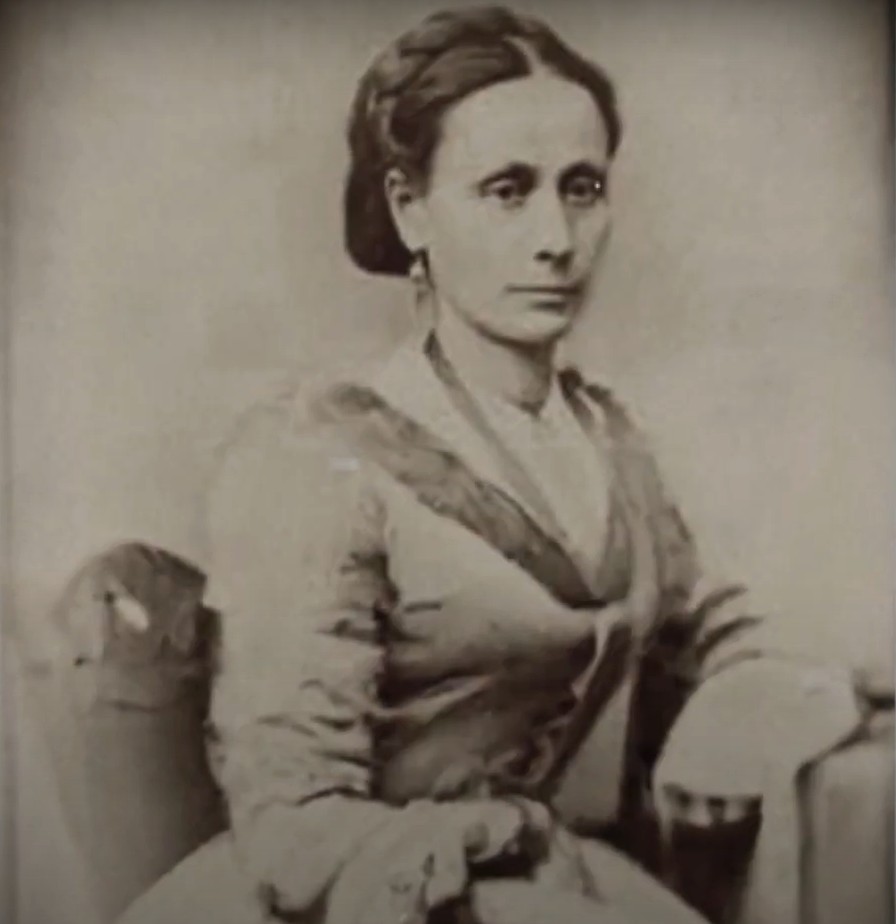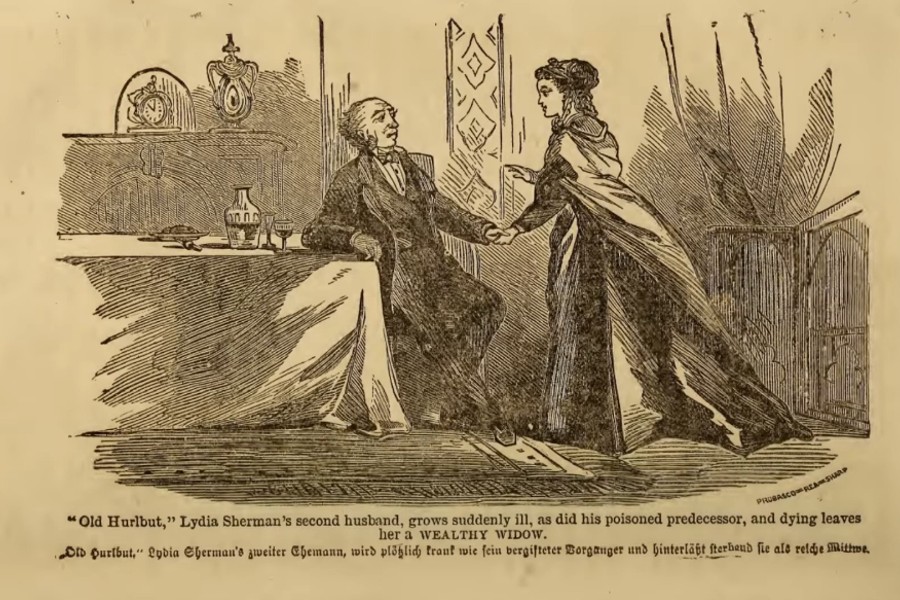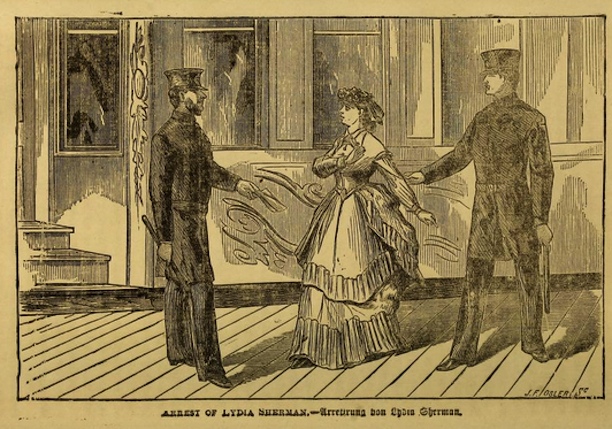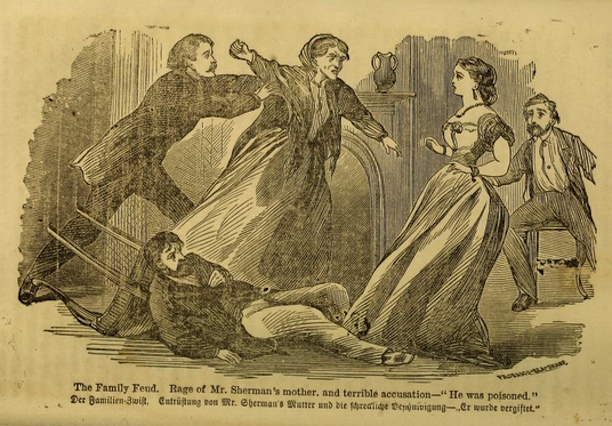
Harlem‘s Lydia Sherman, known as “The Derby Poisoner,” was a notorious 19th-century American serial killer who murdered multiple husbands and children between 1864 and 1871.
An overview
Born Lydia Danbury in 1824 in New Jersey before the Harlem Renaissance, the blue-eyed Sherman was orphaned as a child. Both of her parents were alcoholics and she was orphaned as a baby. She was raised by her father who was a farmer she began working a tailor at 16 years of age.
When the Civil War ended, she married her first husband, a police officer named Edward Struck who was “…a cop in Yorkville an area in New York City,” at age 17 and they had seven children together when they moved to 125th Street in Harlem, New York in 1845.
After Struck lost his job as a police officer and became depressed, Sherman poisoned him with arsenic in 1864. She then killed four of their children over the next year.
RELATED: Check out more Harlem History on our Harlem History Facebook page.
Sherman went on to marry her second husband Dennis Hurlburt in 1868 and Horatio Sherman in 1870 – poisoning both of them as well.
Then Dennis Hurlburt took sick. Though it was later proven that Hurlburt died of arsenic poisoning, Lydia claimed in her confession that she was not responsible:
“I wish to say that I never gave Mr. Hurlburt anything to my knowledge that would cause any sickness whatever. There may have been arsenic in one of the papers I put together, but if there was I did not know it.”
Before his death, in his will, Mr. Hurlburt left Lydia the house and $10,000.

“I wish to say that I never gave Mr. Hurlburt anything to my knowledge that would cause any sickness whatever. There may have been arsenic in one of the papers I put together, but if there was I did not know it.”
Lydia married her third husband Horatio Nelson Sherman in 1870 in the parlor Perkins’ house which still stands at 201 Main Street, Bridgewater, Massachusetts. She also killed two of Horatio’s children from a previous marriage.
Murder By Gaslight wrote that, Lydia was happy as Mrs. Hurlburt for about fourteen months,
Authorities finally caught on after Horatio Sherman died in 1871. An autopsy revealed arsenic poisoning, leading to the exhumations of other victims.
Sherman was arrested in New Brunswick, New Jersey in June 1871.



At her trial in New Haven in 1872, Sherman was convicted of second-degree murder.
- Broadway’s Rising Stars Converge: A Day Of Inspiration At Broadway Express y Más
- Adams, Hochul And More Toast $5 Billion Housing Plan: Building Dreams Together!
- Alicia Graf Mack, Dancer, Educator, And Leader Appointed Artistic Director Of Ailey
- Update: More Illnesses Have Been linked To The McDonald’s E. Coli Outbreak
- Bronx: NYWF’s 30th Annual Dinner Honors Community Leadership And Purpose
She initially maintained her innocence but confessed in January 1873 to poisoning “three husbands and four children.” Though she could not read or write, with the help of a police officer during the same year she wrote her book The Poison Fiend!: Life, Crimes, and Conviction of Lydia Sherman the same year.

Sherman’s case fascinated the public, with newspapers dubbing her the “Wickedest Woman,” “America’s Queen Poisoner,” “America’s Queen Killer,” “The Poison Fiend,” “The Modern-Day Lucretia Borgia” or simply, “The Derby Poisoner.”
RELATED: The Poison Fiend!: Life, Crimes, and Conviction of Lydia Sherman.
Her story highlighted the Victorian-era shock at the idea of a maternal figure committing such crimes.
In total, Sherman is believed to have killed up to 11 victims, including 3 husbands and 8 children.
Prison
While awaiting sentencing, Lydia Sherman dictated her confessions in which she admitted to most of the murders she was accused of committing. The book became a bestseller.
Here’s a song from Murder By Gaslight of the murders committed by Lydia Sherman in New York and Connecticut, 1864-1861.
Song After the Killer
We wouldn’t call it early rap in Harlem, but here is a song about the “Derby Poisoner,” fitting titled “Lydia Sherman:”
Lydia Sherman is plagued with rats
Lydia has no faith in cats.
So Lydia buys some arsenic,
And then her husband gets sick;
And then her husband, he does die,
And Lydia’s neighbors wonder why.
Lydia moves, but still has rats;
And still she puts no faith in cats;
So again she buys some arsenic
This time her children; they get sick,
This time her children, they do die,
And Lydia’s neighbors wonder why.
Lydia lis in Wethersfield jail,
And loudly does she moan and wail.
She blames her fate on a plague of rats;
She blames the laziness of cats.
But her neighbors’ questions she can’t deny—
So Lydia now in prison must lie.
In 1877, Sherman briefly escaped from prison but was recaptured.
Died
She died in Wethersfield State Prison on May 16, 1878, from cancer.
Photo credit: 1) Wiki. 2) Source. 3) Source. 4) Illustration of the “Arrest of Lydia Sherman” from the book The Poison Fiend! Life, Crimes, and Conviction of Lydia Sherman… by George L. Barclay, 1873. 5-6) Wiki. 7) Youtube.
Become a Harlem Insider!
By submitting this form, you are consenting to receive marketing emails from: . You can revoke your consent to receive emails at any time by using the SafeUnsubscribe® link, found at the bottom of every email. Emails are serviced by Constant Contact








